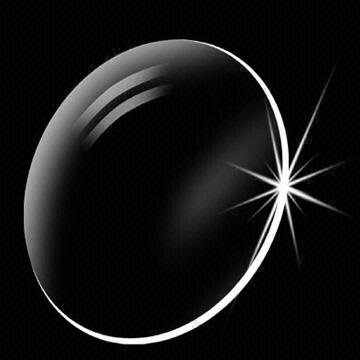A Look at Lens Materials by Jenean Carlton, ABOC, Eyecare Business
Given all the considerations of lens materials, how do you make a decision about the best lens material for your patients? First, learn about the patient’s prescription and lifestyle needs and then research data about materials.
 Index of Refraction: Index of refraction indicates how readily a lens material will refract a bean of light. The higher the index of refraction, the more the material will bend light rays. The higher the index of refraction, the thinner the lenses can be processed. Plus power lenses are thinner in the center when fabricated and minus lenses are thinner on the edges.
Index of Refraction: Index of refraction indicates how readily a lens material will refract a bean of light. The higher the index of refraction, the more the material will bend light rays. The higher the index of refraction, the thinner the lenses can be processed. Plus power lenses are thinner in the center when fabricated and minus lenses are thinner on the edges.
Abbe Value: White light is made up of the visible spectrum of wavelengths from 380nm to 760nm, with each wavelength corresponding to different colors of light. The higher the Abbe value of a material, the less likely it is to have problems with dispersion or chromatic aberration, which is perceived as color fringing or off axis blurring in the lens periphery.
Specific Gravity: Specific gravity is a measurement that determines a lens material’s weight. The lower the density or specific gravity of a material the lighter it will be when fabricated into a lens.
Reflectance: All lenses reflect at least a small percentage of light; some reflect a significant amount depending on the refractive index of the material. The higher the materials refractive index, the greater the percentage of light reflected from the lens surfaces. (END ARTICLE)
At Optical Dynamics, our clearLIGHT advantage lens combines the best of all attributes:
- Thin – Premium Index
- Light Weight – 1.20 g/cm3
- High ABBE Value = 40
- UVA & UVB Protection
- Exceeds FDA Standards
- Drillable
- Excellent Tint Absorption